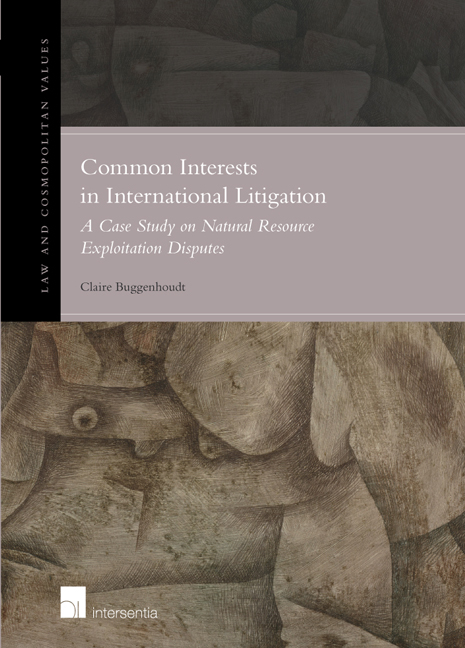Book contents
- Frontmatter
- Acknowledgements
- Contents
- Table of Cases
- List of Abbreviations
- Chapter 1 Introduction and Research Design
- Chapter 2 Procedural Considerations and Common Interests
- Chapter 3 Substantive Considerations and Common Interests
- Chapter 4 A Common Approach to Common Interests
- Chapter 5 General Conclusion
- Bibliography
- Index
- Law and Cosmopolitan Values
Chapter 1 - Introduction and Research Design
Published online by Cambridge University Press: 27 September 2018
- Frontmatter
- Acknowledgements
- Contents
- Table of Cases
- List of Abbreviations
- Chapter 1 Introduction and Research Design
- Chapter 2 Procedural Considerations and Common Interests
- Chapter 3 Substantive Considerations and Common Interests
- Chapter 4 A Common Approach to Common Interests
- Chapter 5 General Conclusion
- Bibliography
- Index
- Law and Cosmopolitan Values
Summary
International law is finally overcoming the legal as well as moral deficiencies of bilateralism and maturing into a much more socially conscious legal order. Thus, a rising awareness of the common interests of the international community, a community that comprises not only States, but in the last instance all human beings, has begun to change the nature of international law profoundly.
B. SimmaThe emergence of different concepts of common interest in international law has sparked an increasing interest in the use of this concept among international lawyers, both inside and outside of academia. International law has always been a balancing act. It continuously reconciles the national interests of different States with the shared interests that those States have identified at the international level, for example in international Treaties. However, it is not clear how, legally speaking, the new dimension of common interests, or interests of the international community as a whole, fits into this existing balance. This is especially true in the context of the international judicial system, which lacks the ‘constitutional world court’ that may seem necessary to enforce common interests at the international level. The proliferation of international law has created an international judiciary that consists of different courts each living on their separate island and focusing on the values that are being enforced by their island's regime.
In the present study, the practice of various international courts and tribunals will be analysed to identify whether and how these bodies reconcile the existence of common interests of the global community with the rules of their specific regime. At the same time, the study will examine how the different judicial bodies balance their Treaty regime with the national interests of the litigating States. A similar tension exists, and a parallel can be drawn, between the consideration of domestic national interests and that of common interests by international dispute settlement bodies: first, because both the global common interest and the national interest may conflict with interests explicitly protected in an international Treaty regime; and secondly, because the national interests defended by individual States before the international judicial bodies oft en overlap with interests shared by the international community.
- Type
- Chapter
- Information
- Common Interests in International LitigationA Case Study on Natural Resource Exploitation Disputes, pp. 1 - 30Publisher: IntersentiaPrint publication year: 2017



